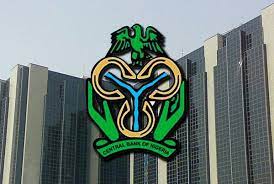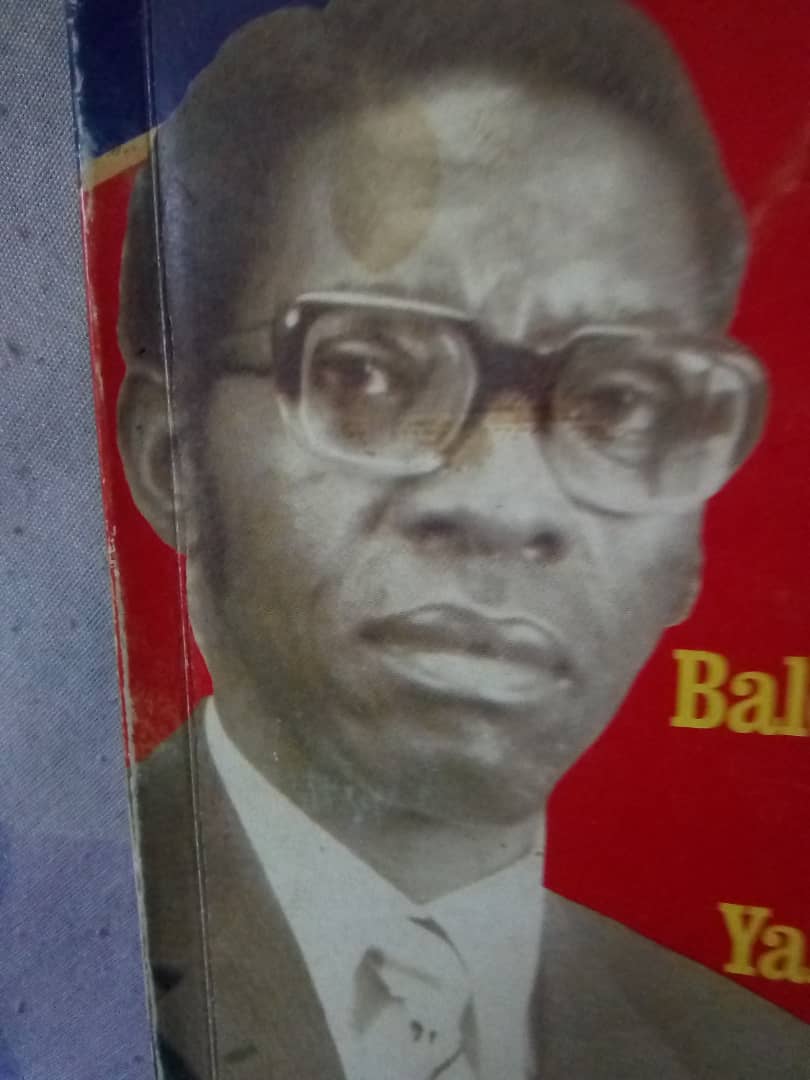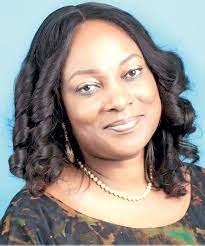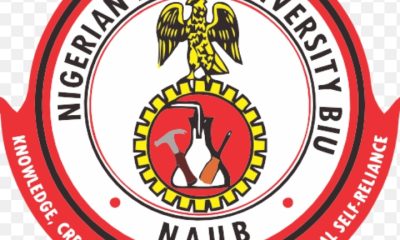Columns
CBN: Directorate of Communications In The Public Eyes

CBN: Directorate of Communications In The Public Eyes
By: Balami Lazarus
As a Columnist, writing freely on any issue and subject has espoused me to the art of investigative writing including interrogating questions. I will put it to the public floor that the CBN Communication Department has not been fair to newsmen and other members of the public who have genuine reasons / business to do at their Head Office in Abuja.
Of late our Correspondent was at the Central Bank of Nigeria (CBN) Head Office to verify some issues that had to do with one of their own but met a brick wall – right from the gates having properly identified himself he was not allowed in.
When I looked at the modus operandi of some public corporations, establishments and parastatals in Abuja and how they respond to these professionals who are the ‘ watch dog’s’ of the society and equally how they are treated, I become disheartened , my person turns into gall if feel for many of them out their doing their beats . Are these establishments properly advised and guided by their Public Affairs and Corporate Services Department?
Journalists on beats in my opinion should be attended to right from the gate of any organization. For me, it is an insult to this humble pen profession? They are always at a place for a reason and on behalf of the public for daily happenings of events to inform , educate and entertain the society in prints / electronics. I always blame the officers who are manning the public image of these establishments as their mouth – piece. Practicing journalists have some privileges for free entry and exit in public buildings and other places that are deemed fit for them to verify their stories or cross-check some facts and figures before going to the press / air.
Also Read: Kashim Shettima: An epitomic genre from Borno
Therefore, it is unfortunate for some public organizations in Nigeria to become dogmatic in their dealings with journalists. However, Public Affairs Departments are seen as the gate – keepers of Ministries Departments and Agencies ( MDA’s) not as zebra – crossing – path.
The crux of the matter is in our attempt to feature some awardees of the 19th National Productivity Order Of Merit ( NPOM) Award 2022, to ask one of their own a Director of Development Finance Department who was nominated for the award by the Central Bank of Nigeria , Mr. Philip Yila Yusuf, ” for his ingenuity and astuteness in helping to build a robust, resilient and inclusive economic in Nigeria ” this is to encourage others to do same and even better.
The Central Bank of Nigeria Communication Department has put a wage in our efforts to tell the world the good works of Mr Philip Yela Yusuf as a living example of hard work and determination as a Nigerian.
If I were to wrongfully accuse and / or alleged that herein our respected and able Central Bank Governor Mr. Godwin Emefiele misappropriated a large fund running into billions of naira, this will no doubt provoke a response from the bank. And to elongate it further, if i should also allegedly said that Mr Philip Yila Yusuf corruptly co-joint with both the Corporate Services and Communication Department(s) to be nominated for the NPOM Award 2022. I reasonably believe there will be a response also from the bank.
Most good intentions are misunderstood by some individuals and organizations the likes of CBN.
Balami , a Publisher / Columnist – 08036779290
CBN: Directorate of Communications In The Public Eyes
Columns
In Search of Our History Through Reconstruction and Restructuring of the Nigerian State for Peaceful Coexistence and Good Governance

In Search of Our History Through Reconstruction and Restructuring of the Nigerian State for Peaceful Coexistence and Good Governance
By: Balami Lazarus
This piece is an extraction from a paper I wrote years back intended to be presented to my society—the Borno Museum Society (BSM)—but it never saw the light of day. However, this is not the original title; I did some changes, putting in some terms to reflect the contemporary issues facing us currently as Nigerians.
Looking at the paper today, which had lain fallow since 1991, I laughed. Dr. Musa Hambolu and Mr. Kyari Bukar, as members, encouraged and urged me to make an effort and present the paper for onward publication in our newsletter, but it never happened. I believe this version will make sense to many more who believe in the Nigerian project as a sovereign nation.
And back to the main menu of the discourse.
One of the major historical developments in Africa south of the Sahara was the great Bantu migration that took place thousands of years ago. It was a mass exodus of the Bantu people, culture, and traditions; its droplets along the line of their migration gave birth to settlements, which had affected many ethnic nations’ language, culture, and traditions. What happened later is part of African history. We are now nestled between who are we? And what are we?
It is very clear that the reconstruction of our history through the restructuring of Nigeria and its state and conditions has long been toyed with, knowing fully well that it is the heart of our peaceful coexistence and good governance. It’s also the main bowl of our socio-political and economic growth and developments.
Our history, geography, and ethnology have drawn our attention to the state of sovereignty known, called, and addressed as Nigeria, a colonial creation, forgetting that we were here before.
the white man’s creation.
To trace the origin of the people that made up Nigeria, one cannot dismiss the substance of other disciplines like history, archeology, anthropology, geography, sociology, and linguistics, and other related subjects. These fields of scholarships have tremendously improved in the explanations of our history, artifacts, and cultural source materials of the people that were wrongfully and forcefully brought together to live and form Nigeria. Therefore,
There is the need for the restructuring of the Nigerian state for peace and good governance for the benefit of all citizens.
To achieve this, we must collectively agree with one voice to restructure our systems to find a lasting solution to our torn political garment, unity shredded with suspicion generated by us over the years. Because modernization is the process of change towards social, economic, and political systems.
Historically, Nigeria is a conglomerate of large ethnic diversities, and each represents a distinct nation with different cultures, traditions, and civilizations living independently before the forceful amalgamation of 1st January, 1914, carried out and executed by the British colonial masters. Sources available to political historians on our past underscored the necessity to shift from the present state of nationhood to a common ground that will provide us with equal opportunities to maintain and sustain our togetherness as one indivisible and indissoluble nation through reconstruction and restructuring.
The reconstruction and restructuring of our historical and political past is paramount; it will aid in checking the high rate of insecurity and criminal activities of bandits and kidnappers. And shall also clamp down on terrorists and the rise of insurgents. Restructuring will reduce sentiments and segregation in the activities of our national life.
History does not repeat itself. But people repeat history and then falsely accuse history of repeating itself.
We have consciously decided to polarize our country with Black Strike sentiments. And here we are, with agitations in different forms: Oduduwa, Biafra, Middle Belt, and Niger Delta.
Balami, Publisher/Columnist 08036779290
In Search of Our History Through Reconstruction and Restructuring of the Nigerian State for Peaceful Coexistence and Good Governance
Columns
Aspirations: A Compass for a Purposeful Journey of Life

Aspirations: A Compass for a Purposeful Journey of Life
By: Harmony Shimbura
A blueprint for a purposeful journey, the human experience is often defined not by where we are looking, but by having aspirations, a compass of purposeful life, and an act of claiming agency over one’s future.
My life’s aspirations are not merely a list of goals or a collection of ‘bucket list’ items. It is a living philosophy, a commitment to growth, connection, and the relentless pursuit of a life lived with intention. They are threads woven together for personal values and to give back to your community.
I believed the core of aspirations should be a desire for perpetual evolution. And I also believe that the moment we stop learning is the moment we stop breathing. Therefore, one of my primary goals is to remain a lifelong student where learning is a continuous process.
I aspire to deepen my understanding of the world through diverse perspectives, whether it is through traveling to places where knowledge is obtained by listening or observations, as is the case with the traditional Cherokee ways of learning.
I constantly challenge my own biases, spiritually and mentally. I aspire to reach the state of equilibrium where my peace is not dependent on external circumstances.
Do you know that aspirations transcend titles and salary brackets? Moreover, my true ambition is practical impact. I want to be engaged in work that I feel is the extension of my soul in it at whichever level. I also
I believe that work should be a contribution to the collective good of humanity.
As a young lady, I am on the self-push to achieve a level of mastery in my chosen field where my intuition is as sharp as my skills. I want to be known not just for what I did, but for how I did it with integrity, excellence, and a collaborative spirit.
Most of us neglect the vessel that carries us through life, but I aspire to treat my body with the respect it deserves. My aspirations for health are not about vanity but for sanity in purity.
These aspirations are not a destination I will one day reach; they are the fuel for a lifelong journey.
Harmony Shimbura writes from Zaria. 07033886918
Aspirations: A Compass for a Purposeful Journey of Life
Columns
Once upon a time, Plato College Sharam was a leader in academic excellence and discipline among schools in Nigeria

Once upon a time, Plato College Sharam was a leader in academic excellence and discipline among schools in Nigeria
By: Balami Lazarus
This article is dedicated to the living and dead. My teachers at Sharam, the 1978 intakes. For my wonderful classmates at Plato College. And for those before me, nice to have you as schoolmates.
I will use the “I” and “we” pronouns interchangeably because I was there as a student one cold morning of September 1978, where I spent two and a half academic sessions and left in 1980, leaving behind good and competitive classmates.
We of the 1978 intakes came from different parts of the country, from places like Yola, Lagos, Maiduguri, and Sokoto, and from other towns and cities as teenagers—boys and girls.
We that came from the city of Jos, few knew each other, while many for the first time. But Plato brought us together as students in Sharam to drink from the fountains of knowledge and discipline provided by Plato College Sharam near Kabwir in the Kanki Local Government Area of Plateau State. This came through Dr. Samuila Ndayako of blessed memory.
Similarly, classrooms, dormitories, and group work, assignments, and games were the cause of saving punishment that marked the beginning of my friendships with boys like Nash John Wash Pam, Jolomi David Amogoriye, Yau Dangana, Ismail Abdul, Thomas Owmeri, Gbenga (Kaduna), Kenneth Anosike, Edna Menta, and a few other students. I hope believing is well with them.
When I met with a few of them recently, it was a flashback of nostalgia of our days at Plato College Sharam as boys and girls full of life and dreams. Plato was a place to remember for two reasons, whether you like it or not: character and learning through academic excellence and discipline that you cannot take away. “One of the best-performing schools in the whole country in the West African School Certificate Examination (WASCE) for many years running.” Records as follows: 1979 to 1986: 100%; 1990: 100%. From 1994 to 1995, 100% was also achieved. And in 1997, 100% was made.
Sharam had never had it below average. The few of us that left for other schools manifested the academic training we got at Plato, where we were able to redeem it in character and learning.
Plato College Sharam is a co-educational institution established and owned by Dr. Samuila Ndayako, who was the Rector of the school. It came into existence on the 29th of September 1973 as Yakubu Gowon College but was later changed to Plato College in 1975 due to the circumstances surrounding General Yakubu Gowon in the year 1975. Political/military historians and journalists will know better of what took place.
The late Dr. Samuila Ndayako has left an indelible mark on the history of education in Nigeria. He was the first individual to start a private secondary school in the then North Central State, present Kaduna State, known as Balewa Memorial College at Samaru-Zonkwa, in 1967-1st April 1972, when the government took over mission schools and others from their rightful owners. Besides, he was also the first Northerner to
established a private secondary school. Equally one among the early individual proprietors of
private schools in Nigeria.
Sharam was a place for high moral and academic standards where you are expected to behave well. It opened our eyes to excellent academic performances, which regimented our minds for excellence. Plato during our days is where failure is not tolerated, even as a neighbor talks less as a co-tenant. Therefore, Plato College was the walkway for excellent performances for Platonians of Sharam.
It was where I learned the differences between discipline and punishment and understood that when discipline fails, you have no option other than to apply punishment. Here I learned of beneficial punishments that benefit all students and the school.
Plato College provided us with equal opportunities of a school environment as students. An environment where you are carried along and treated like any other student.
It was in Sharam that I understood the meaning of physical and mental work with its endless dividends. For many of us, it has become part of us to this day. Our Rector has always said it loud and clear that “no student I will train will end up useless.”
We were taught respect and its abundant benefits. As a co-educational institution of learning, we (the boys) are made to show respect and care and treat the girls with love. And we considered them anytime, anywhere as our sisters, because we were also taught to be responsible as future men and leaders.
At Sharam, obedience to school rules and regulations is a must. In fact, the military environment will bow to Plato College during our time.
Notwithstanding, Plato College had her challenges during our time, like extreme cold weather and water and electricity. Our seniors were strict on rules and regulations; some are bullies. However, every student, boy or girl, is made to have senior students as school fathers or mothers to guide and assist him or her from time to time.
What I had also learned personally from the life of Dr. Samuila Ndayako are honesty, boldness, fearlessness, and perseverance.
My school father was Senior Dung Peter, a kindhearted and brilliant student. Who has assisted and guided me to understand why I was in Sharam? I appreciate you.
Balami, Publisher/Columnist 08036779290
Once upon a time, Plato College Sharam was a leader in academic excellence and discipline among schools in Nigeria
-

 News2 years ago
News2 years agoRoger Federer’s Shock as DNA Results Reveal Myla and Charlene Are Not His Biological Children
-

 Opinions4 years ago
Opinions4 years agoTHE PLIGHT OF FARIDA
-

 News9 months ago
News9 months agoFAILED COUP IN BURKINA FASO: HOW TRAORÉ NARROWLY ESCAPED ASSASSINATION PLOT AMID FOREIGN INTERFERENCE CLAIMS
-

 Opinions4 years ago
Opinions4 years agoPOLICE CHARGE ROOMS, A MINTING PRESS
-

 News2 years ago
News2 years agoEYN: Rev. Billi, Distortion of History, and The Living Tamarind Tree
-

 ACADEMICS2 years ago
ACADEMICS2 years agoA History of Biu” (2015) and The Lingering Bura-Pabir Question (1)
-

 Columns2 years ago
Columns2 years agoArmy University Biu: There is certain interest, but certainly not from Borno.
-

 Opinions2 years ago
Opinions2 years agoTinubu,Shettima: The epidemic of economic, insecurity in Nigeria





